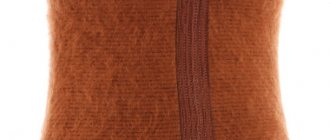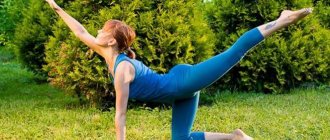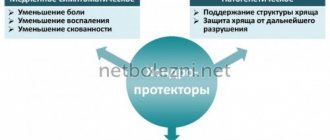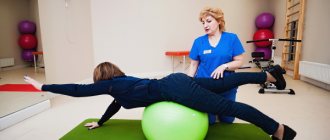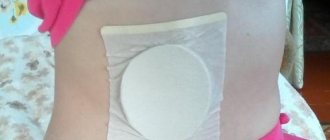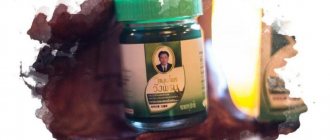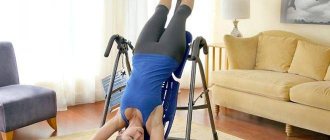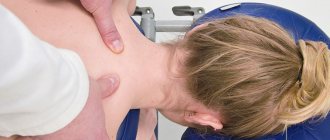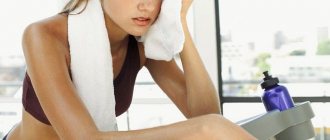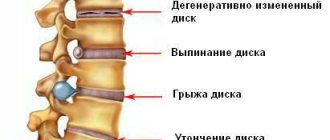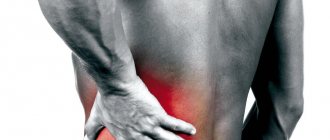For osteochondrosis, radiculitis, pinched spinal nerves and other diseases, doctors advise wearing a back belt to reduce the intensity of pain. Orthopedic devices perfectly support the spine, relieve some of the load from it, relieve discomfort, improve blood circulation in the damaged area, etc. But in order to get a pronounced therapeutic effect, you need to choose the right back belt for lower back pain. Before using a medical device, you need to study the main indications for its use, as well as the features of its wearing.
Indications for use
The spinal column consists of many movable segments. Under the influence of negative factors or various diseases, they become unstable. Then the risk of damage to the intervertebral discs, vertebrae, and surrounding soft tissues (blood vessels, nerve roots, muscles) increases. A lumbar belt supports, stabilizes and protects the spinal segments from damage when the product is properly fitted and used. This device reduces pain and reduces the likelihood of damage to the vertebrae.
Reference. Orthopedic models help to activate blood flow and metabolic processes, and as a result, nutrition of the lumbar segment improves. They have a mild massage effect and provide muscle support during myositis (inflammation of skeletal muscles). Products with a warming effect accelerate the fat burning process.
The back belt is recommended for use in the following diseases and conditions:
- Osteochondrosis of the lower back.
- In case of disc protrusion or herniation.
- Radiculopathy (inflammation of the spinal nerve roots).
- Overgrowth of bone tissue along the edges of the vertebrae (spondylosis).
- Osteoporosis, secondary tumors in the spine that cause compression of the spinal nerves.
- Sciatica (neuritis of the sciatic nerve).
- Arthrosis of the vertebral joints.
- Muscle spasms.
- Strained back muscles due to injury.
- Bone tuberculosis, which affects the tissue of the spine.
- Narrowing of the spinal canal.
- Spondylolisthesis (displacement) of the lumbar vertebrae.
- Cystitis.
- Nephrolithiasis (deposition of stones in the kidneys).
Back belts help relieve pain in the diseases described above and reduce the likelihood of complications.
Reference. The back belt is recommended for athletes, drivers, and loaders to wear when there is a high load on the lower back. Elastic products relieve some of the load from the vertebrae and prevent muscle strain.
Orthopedic corsets, bandages and orthoses are indicated during complex treatment of back injuries, after surgery on the spine or abdominal organs.
No ads 1
Hardness degree
Therapeutic belts differ in the degree of rigidity; depending on this criterion, 3 types of products are distinguished:
- Light hardness. This is an elastic corset for the back and lower back, which is made of dense material. The product does not have additional internal fixing elements (stiffening ribs). This bandage can be worn by pregnant women, athletes and other people at risk. The device is used to prevent the destruction of intervertebral discs due to excessive load on the lower back.
- Medium support. This lumbar bandage is also made of dense material, in addition, it is equipped with 2-4 stiffening ribs, fasteners, and belts for additional fixation. Wearing such products is indicated for exacerbation of spinal diseases that are accompanied by pain, for example, osteochondrosis at stages 2–3. In addition, moderate support belts help prevent compression fractures due to osteoporosis and spinal curvature.
- High degree of rigidity. This is the toughest spinal corset, which consists of 4–8 stiffening ribs made of plastic or steel, belts, fasteners and other elements that allow it to be securely fixed to the body. It is recommended to wear such a bandage after spinal injuries, during the entire rehabilitation period after surgery, as well as to correct posture in cases of severe curvature.
Reference. Depending on the segment of the spine that supports the bandage, the following types are distinguished: thoracolumbar, lumbar, lumbosacral.
Why take a bandage?
An orthopedic bandage is used in the treatment of problems associated with the functionality of the lumbar region. It would be advisable to wear it in other cases:
- for diseases of the spine (exacerbated forms of chronic ailments);
- after surgery;
- for the prevention of back injuries that occur due to work, excess weight, sports, and also during pregnancy.
A bandage is an orthopedic belt that is made of a material that can stretch. It has special inserts and various stiffening ribs. Fixation occurs through the following components:
- carbines;
- Velcro;
- belts
The bandage is a useful orthopedic device.
All these components help in immobilizing and supporting the spine in an anatomically correct position.
Types of back belts
Back belts are a dense elastic base, which is equipped with wide belts, fasteners, and stiffening ribs. Additional elements allow you to change the degree of fixation of the product on the body. There are several types of belts that differ in their therapeutic functions, sizes, and materials of manufacture.
An orthopedic belt supports the vertebrae, relieves stress on the back, relaxes muscles, reduces pain
Orthopedic
This is a special back support belt that allows you to fix the spine in the correct position. Then the load on the damaged segment is reduced, the surrounding muscles relax, and the pain is reduced. A corset to support the lower back is used for muscle strain, osteochondrosis, disc herniation, and cracks in the vertebrae.
Reference. Orthopedic products limit the mobility of the back, reliably supporting it to protect against possible injury during sudden movements.
Lumbosacral orthoses can be elastic, soft, semi-rigid, or rigid. Elastic belts are used for osteochondrosis to reduce pressure on nerve bundles and reduce pain. A soft lumbar corrector allows you to correct posture in children and adolescents. Semi-rigid models help reduce pain during disc herniation and eliminate lumbago in the lumbosacral region. A rigid restraining corset is recommended to be worn after vertebral fractures and other serious injuries.
[node:field_similarlink]
Warming
Such products are made from natural or synthetic materials with low thermal conductivity. The inside is a belt insulated with dog, goat, camel hair, and neoprene (synthetic rubber). Natural materials allow air to pass through to the body, but at the same time retain their own warmth. The warming belt perfectly fixes the back, maintains temperature balance, accelerates blood flow, metabolic processes and regeneration of damaged tissues. A neoprene corset relieves the load on the spine and prevents its curvature during prolonged use.
Warming corset fixes the back, activates blood circulation
Warming belts are recommended to be worn during the cold season, as they protect against hypothermia, prevent myositis, and diseases of the urinary system.
Pneumatic (inflatable)
This corset has inflatable vertical cavities that need to be filled with air before use. A tonometer is attached to the base, with which you can monitor the pressure. A medical air corset is indicated for exacerbation of radiculitis, kidney diseases, for the prevention of disc herniation, as well as during rehabilitation after injuries. The product helps to slightly increase the distance between the vertebrae, thereby reducing the load on damaged discs.
An inflatable bandage supports the spine and has a warming property
The belt is put on in a deflated state, then it is inflated, after which it takes the shape of the body. The degree to which the corset is filled with air depends on the disease; you should consult your doctor on this issue. This fixing belt also has a warming effect.
Magnetic
The base of such a corset is made of elastic material (polyvinyl chloride, spandex or nylon), into which special magnets are sewn. The therapeutic magnetic belt is used for neuralgia, radiculitis, osteochondrosis, and diseases of the genitourinary system.
Magnetic belts improve blood circulation, metabolic processes, accelerate tissue healing
After putting it on, a magnetic field is created under the influence of the heat of the human body, which has a positive effect not only on the spine, but also on the internal organs. When worn regularly, blood circulation in the affected area is accelerated, metabolic processes and tissue trophism are improved, and the regeneration process is accelerated. The degree of rigidity of a magnetic structure depends on its size, thickness and number of plates.
Massage
Such products are used to prevent lower back diseases and for weight loss. It is equipped with built-in vibrating elements or special attachments that accelerate blood circulation and metabolic processes in the waist area. Heavy fitness training is also an indication for the use of massage belts; they help relax muscles, accelerate the elimination of lactic acid, and relieve pain. For diseases of the lower back, such a corset can be worn after physical therapy.
As you can see, different types of belts have different purposes, so consult your doctor before purchasing the product. A specialist will tell you which type of corset is best for you, help you choose the right size and tell you about the features of wearing it.
No ads 2
How to choose
If you experience lower back pain, do not choose orthopedic devices on your own; it is better to consult a doctor. The therapist will find out the cause of the discomfort and tell you what type of belt to choose.
If your doctor recommends purchasing a warming corset, then pay attention to industrial products. Such belts are treated with antiseptic compounds, so the likelihood of infection is minimal. It is recommended to choose devices that are lined with fabric on both sides; they will last longer.
Reference. Knitted warming belts are easier to care for and can be washed at home. It is better to refuse fur, quilted, felted corsets, as they need to be dry cleaned.
If you have allergies, it is better to abandon warming bandages with dog hair in favor of products made of neoprene, camel or sheep wool (they are hypoallergenic).
When choosing a belt for the lumbosacral region, pay attention to the following nuances:
Corset for posture correction
- Corset size. Please measure your waist circumference before purchasing. If the compression effect of the product is insufficient or excessive, then you will not receive any benefit from such treatment. If the belt compresses too much, blood circulation and the functioning of internal organs will be disrupted.
- Belt design depending on gender. During the manufacture of bandages, the anatomical features of women and men are taken into account. A consultant or doctor will help you choose the appropriate option.
- Comfort while wearing. A correctly selected belt should not rub or cause pain, even if the patient wears it naked. Although doctors recommend wearing a corset over underwear. While wearing it, a person should feel relief.
- Quality of seams and fittings. The fasteners should provide reliable fastening of the bandage, but not damage the skin. Make sure that the seams of the product are neat and there are no threads sticking out of them. Give preference to belts with metal buckles and fastenings, they are more reliable. Velcro is more convenient to use, but over time they become clogged and no longer securely fix the belt.
Reference. If the patient’s figure is non-standard, then a custom-made corset will be made for him. To do this, you need to contact an orthopedic salon.
The decision on choosing the degree of rigidity of the lumbar corset is made by the attending physician.
No ads 3
Children's bandages
Wearing a lumbar bandage is a simple and, most importantly, safe way to treat and correct posture.
The problem of incorrect posture and lumbar strain is especially acute for children. They often suffer from this because they hunch over, assume incorrect body positions, or bend or lean excessively while working on a PC. In addition, they often have a lack of calcium and vitamin D.
All this has an extremely negative effect on the condition of the lower back and the formation of posture. The result is scoliosis of the spine.
If a child does not engage in any kind of sports or does not do morning exercises, then he will experience weakening of his muscles and a decrease in the flexibility of the spine. As a result, various types of kyphosis, scoliosis and lordosis appear.
For children who suffer from pain in the lower back, a bandage is essential
Scoliosis progresses faster in children because their bones and cartilage are more pliable. Because of this, the orthopedic doctor will have a special task - choosing a children's bandage. It will prevent the child from slouching and will maintain anatomically correct posture.
The appropriate age for wearing a lumbar brace is from eleven to sixteen years. Warming models are used only when children suffer from radiculopathy, but this rarely happens.
For grade 1 scoliosis, the orthopedic bandage is worn for a maximum of five to six hours a day. If grade 2 is detected, you need to wear it all the time, the only exception being during sleep.
It is worth noting that you need to remove the bandage for at least a short period of time (an hour a day). This must be done regardless of the severity of the pathology. At this time, it will be useful to give your child a massage. This prevents swelling and possible circulation problems.
Rules for wearing and care
To ensure that back belts bring only benefits, follow these recommendations when wearing them:
- Supportive corsets need to be worn for a certain period of time; they are not intended for permanent use. This is explained by the fact that the belt unloads the muscles around the spine; with prolonged wear, they will weaken and atrophy. To quickly cure back diseases, wearing a corset should be strictly dosed - from 4 to 6 hours per day (preferably with breaks). During rest, the bandage must be removed, as it is useless. The duration of wearing orthopedic devices during treatment is about 10 hours, and sometimes can be extended up to 20 hours.
- The duration of wearing the inflatable belt is up to 2–3 hours. You can wear a corset for the first time for no longer than 20 minutes.
- Warming bandages are worn for no longer than 10 hours without breaks, especially in the cold season.
- The corset should be tightened with moderate force. When excessively tugging, the tissues are pinched, swelling appears, blood circulation and the functioning of internal organs are disrupted. If the belts are loosely tightened, the therapeutic effect of the belts will not manifest itself. Fix the product so that the degree of tension is moderate and there is no discomfort.
- Doctors do not recommend wearing a corset on a naked body, as protruding elements can rub the skin and the fabric will get dirty faster. It is better to wear belts over a tank top or T-shirt. Orthopedic bandages can be washed frequently, this does not affect their therapeutic properties. The therapeutic effect of warming belts decreases after each wash.
- It is recommended to drink plenty of fluids while wearing the magnetic belt.
- The corset must not be worn on the body if there is any damage (wounds, scratches, ulcers).
Patients should remember that therapeutic belts for the lower back are used as part of complex therapy, but they will not help cure the disease on their own.
When used correctly, a lumbar corset will bring maximum benefits.
To extend the life of supportive and warming corsets, you need to properly care for them. The magnetic bandage should be stored away from computers, household appliances, and digital storage media. When cleaning corsets, it is prohibited to use chlorine-containing products. They should only be washed by hand at temperatures up to 40°; wringing the items is prohibited. Dry the belt on a towel away from direct sunlight and heat sources (batteries, heating devices). Ironing corsets is prohibited.
Popular models and costs
If you want to choose a good supportive, corrective or warming corset, then pay attention to the following list, which presents the most popular models:
- Warming belt made of dog hair "Taiga".
- Lumbar support bandage “Therapist”.
- Warming corset made of camel wool "Leonarda".
- Neoprene bandage “Vulcan Classic Standard”.
- Magnetic corset “Healer”.
- Inflatable belt "Hercules".
Reference. The Phoenix Faradotherapy belt "Fohou" is made of a special material, and low-power magnets and more than 50 types of crushed minerals are placed inside it. It acts on the lower back according to the principle of acupuncture, activating biologically active points. This corset accelerates blood flow and metabolic processes, relieves pain, and helps cope with many lower back diseases.
The Kuznetsov applicator can be fixed on the lower back using a wide belt
And also very popular among patients is the Kuznetsov massage applicator, which can also be fixed on the lower back using a wide neoprene belt. This device also stimulates blood flow and metabolism in the damaged area, and accelerates tissue healing.
You can buy corsets for the lower back in well-known orthopedic salons in Moscow. The main thing is to check the quality certificates for the products during purchase.
The final price depends on many factors: material, degree of rigidity, type of belt, model, size, brand of product. The estimated cost of a warming bandage is from 450 to 1000 rubles. For an orthopedic bandage you will have to pay at least 900 rubles. The price of highly complex models with corrective inserts reaches 9,000 rubles.
Contraindications
Orthopedic bandages are medical products, therefore they also have contraindications for which their use is prohibited. Such cases include:
- The presence of reflux - backflow of the contents of hollow organs,
- Manifestations of allergic reactions in places where the corset comes into contact with the body,
- Hypersensitivity to the materials from which the bandage is made.
In such cases, it is necessary to abandon therapy using such a product and, together with a specialist, select another technique.
Reviews
Most people who experience lumbar pain are satisfied with the effects of therapeutic belts. They claim that after regular use of orthopedic devices they were able to get rid of discomfort in the lower back.
Maxim, 42 years old: “When I was a student, I worked part-time as a loader, and that’s when I broke my back. From time to time, pain appeared in the lower back, which intensified by the age of 40 and began to spread to the buttocks, as well as the right leg. I went to the hospital, the doctor diagnosed stage 3 osteochondrosis with a hernia in the lumbar region. I was prescribed medications, physiotherapy, exercise therapy and an orthopedic belt to relieve the strain on my back. I wore the corset for about 3.5 hours a day, at first it was unusual, but then I got used to it, especially since the pain really eased while wearing it.”
Natalia, 30 years old: “I have been suffering from lower back osteochondrosis for about a year now. As part of complex therapy, I use medications, go to massage, physiotherapy, do gymnastics, and in addition, I regularly wear a special belt. I wear orthopedic devices when I go to work. Previously, it was difficult for me to overcome this path due to severe pain in the lower back, but now this problem has disappeared.”
Denis, 40 years old: “A year ago I had surgery to remove a hernia in the lumbar region. During rehabilitation, the doctor prescribed wearing a rigid orthopedic corset for 4 weeks. Now I only use it during long car trips. There is no discomfort in the back, even if the road is bumpy.”
What it is?
A hernia of the lumbar spine is a protrusion of the nucleus pulposus of the intervertebral disc beyond the fibrous ring. It penetrates the spinal canal, causing double vision on the spinal roots and nerve plexuses, blood vessels, and spinal cord.
Symptoms
At first, a hernia manifests itself as pain in the lumbar region. At first it is aching and dull. Then it becomes acute, intense, and begins to radiate to the leg on the side of the impact of this pathological formation on the nerve root. The intensity of the pain syndrome increases significantly with physical activity, sitting, and in an upright position of the body.
The patient is also concerned about the following:
- unilateral pain in the gluteal region;
- numbness, tingling in the leg on the side of the affected root;
- decrease in the volume of active movements in the lumbar region, lower extremities, mainly on one side;
- poor posture, severe stoop;
- feeling of stiffness, tension in the back muscles;
- gait is impaired;
- the patient notes weakness of the foot muscles, in severe cases it hangs down;
- Autonomic disorders, areas of redness and blanching of the skin are observed.
In advanced cases, the patient experiences fecal and urinary incontinence. He cannot walk due to paresis and paralysis of the lower limbs.
Reasons for appearance
A hernia is formed due to a violation of the integrity of the fibrous ring of the intervertebral disc. This occurs due to prolonged pressure on the spine or due to acute injury. The ring becomes brittle. Then a crack forms, into which the elastic part of the disc, the nucleus pulposus, protrudes.
The development of this process is facilitated by:
- excess weight;
- spinal injuries;
- weakness of the ligamentous apparatus;
- scoliosis;
- work in a sitting position;
- lifting, carrying heavy objects;
- joint diseases;
- pathologies associated with metabolic disorders.
Hereditary predisposition plays an important role in the formation of hernias.
The most important
As you can see, a back belt for lower back pain will help relieve discomfort and speed up recovery. There are different types of orthotics, so it is important to choose the right one for you. This decision should be made together with your doctor, even if you need the belt for prevention. When choosing a product, you need to take into account its size, material, type, quality of seams, fittings, design, and your own feelings while wearing it. And you should also remember that you need to wear a back belt for an average of 4–6 hours; if necessary, the doctor will extend this time. A lumbar corset will help cope with pain, stop further destruction of the cartilage and bone structures of the spine, and speed up the process of tissue regeneration.
Criterias of choice
First of all, when choosing a design, you should rely on the recommendations of your doctor. The doctor takes into account the stage of the disease, the size and weight of the patient, the purpose of use (full treatment or preventive measures).
Corsets with high rigidity must apply pressure with plates on the affected area and are often used for hernias. If the design is soft, it simply will not eliminate the pain. Rigid products are also recommended after surgery, for lumbago, and fractures.
For a less serious diagnosis, the doctor prescribes a softer product that additionally warms the sore spot.
